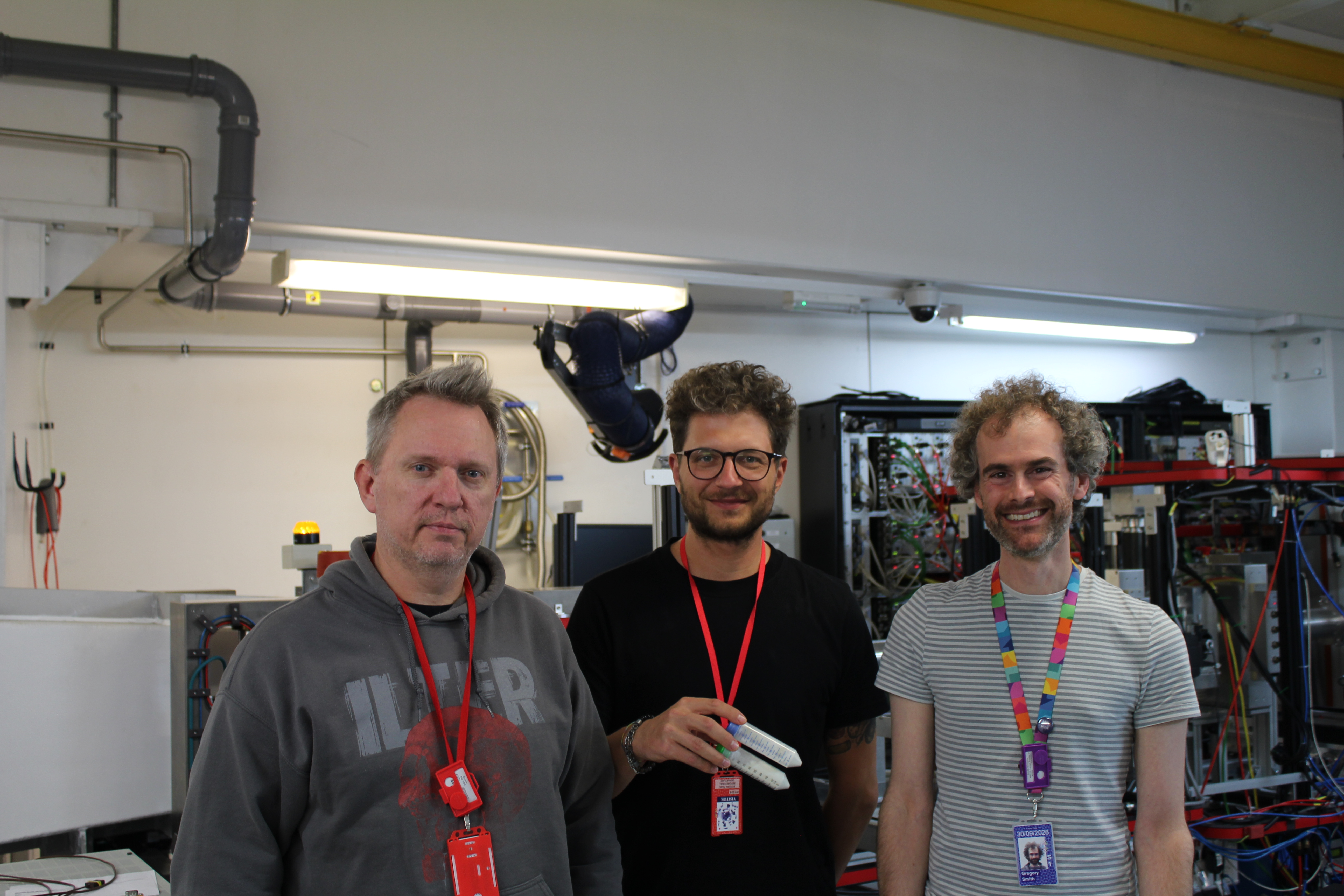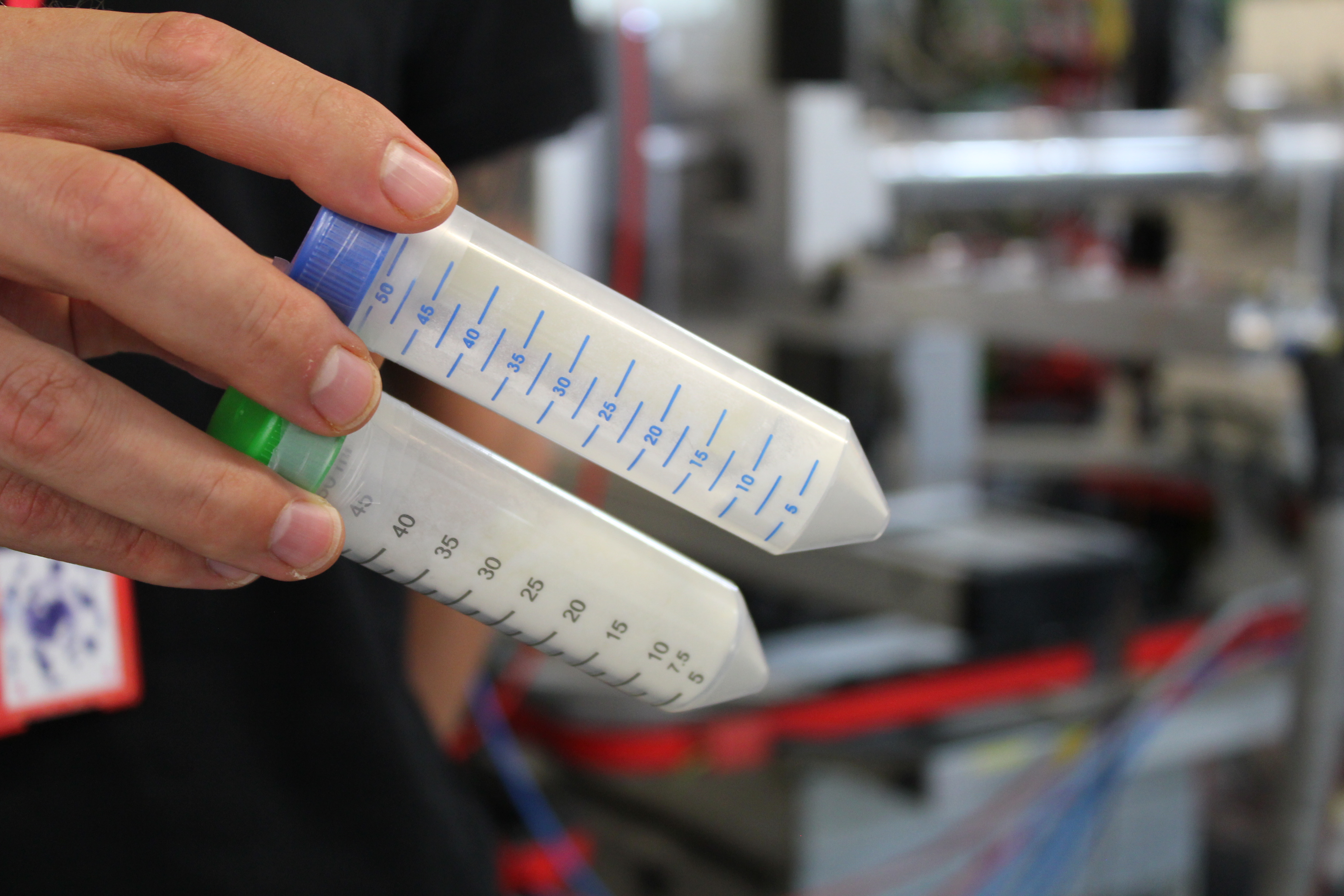 Casein micelles represent ~80% of the total protein content in milk, and their size means that they scatter visible light, which is what gives milk its white colour. Associate Professor Jacob Kirkensgaard and Dr Giovanni Barone from the Department of Food Science, University of Copenhagen visited our Larmor instrument to use small-angle neutron scattering (SANS), to learn more about the structure of casein micelles. “There are many hypotheses and debate about the structure of casein micelles,” Dr Barone explained, “but no one really knows”.
Casein micelles represent ~80% of the total protein content in milk, and their size means that they scatter visible light, which is what gives milk its white colour. Associate Professor Jacob Kirkensgaard and Dr Giovanni Barone from the Department of Food Science, University of Copenhagen visited our Larmor instrument to use small-angle neutron scattering (SANS), to learn more about the structure of casein micelles. “There are many hypotheses and debate about the structure of casein micelles,” Dr Barone explained, “but no one really knows”.
Casein micelles consist of casein proteins, and their size ranges from ~50nm to ~300nm. When speaking to us while on a recent visit to ISIS, the team described their project as “essentially building milk” to form casein micelles, using single caseins that can be produced by microbial fermentation. They hope that, in the future, microbial caseins could provide a more sustainable alternative to cow's milk. Plant-based products often have low calcium content, and when calcium is added, it can result in a gritty texture that is unpleasant to consume. Using casein micelles from fermentation may be a solution to deliver sufficient mineral content.
Casein micelles in milk are in principle a delivery system, mainly for calcium, but there is also potential for their use in drug delivery! The team is disassembling micelles to observe the role calcium plays in its structure. Ideally, they would split it into single casein and re-build the micelle again to gain as much understanding as possible.
 To do this, the team used raw, unpasteurised milk and removed the single casein. They altered the pH to solubilise the calcium. The micelle expands or collapses depending on the pH; at pH 4.5, they found that micelles can be separated from the calcium to obtain single caseins.
To do this, the team used raw, unpasteurised milk and removed the single casein. They altered the pH to solubilise the calcium. The micelle expands or collapses depending on the pH; at pH 4.5, they found that micelles can be separated from the calcium to obtain single caseins.
The team used a powdered sample, to which varying amounts of deuterated (or heavy) water can be added to determine how neutrons scatter from specific parts of the micelle, which will help them learn about the micelle’s structure. Model systems are created that imitate skimmed milk at various stages, providing information on what is happening within casein micelles.
It is hoped that this research will advance the debate surrounding the structure of casein micelles and pave the way for use of microbial fermentation to produce non-dairy milks.
